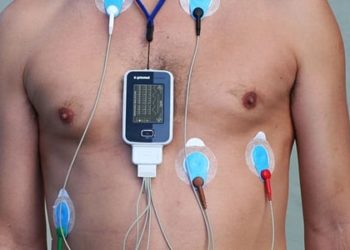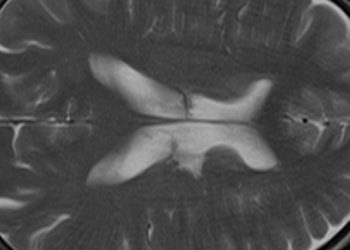Efficacy of mechanical thrombectomy for acute stroke improved with combination balloon guide catheter
1. In patients with acute ischemic stroke due to anterior circulation occlusion who present within the appropriate time frame, mechanical thrombectomy with stent-retriever devices performed with a balloon guide catheter is associated with a higher revascularization rate than thrombectomies performed with a non-balloon guide catheter.
2. Thrombectomy procedure duration is significantly shorter when performed with a balloon guide catheter as compared those performed with a non-balloon catheter.
Evidence Rating Level: 2 (Good)
Study Rundown: Acute ischemic stroke is a leading cause of serious disability and death worldwide. The goal of treatment is to rapidly recanalize the occluded vessel, restoring blood flow to the ischemic area, and subsequently rescuing as much hypoperfused tissue as possible to reduce long-term neurologic deficits. Therapies for stroke in the acute period include intravenous tissue-type plasminogen activator (IV-tPA) to attempt to chemically lyse occlusive clots, and the emergence of endovascular techniques, including intra-arterial thrombolytic drug delivery or mechanical thrombectomy with the use of stent-retriever devices in cases of large vascular occlusions. While endovascular procedures in the carotids have made use of proximal protection devices such as balloon guide catheters to prevent distal embolization, intracerebral vascular procedures have not uniformly adopted the standard due to a lack of evidence and concern for increased procedural time, risks and costs. The present study sought to compare the rates of first-pass revascularization of mechanical thrombectomy performed with a balloon guide catheter or non-balloon guide catheter in patients with acute ischemic stroke to determine which method is more efficacious. In addition to charting angiographic findings, type of stent retriever used, the researchers compared recanalization rates and procedure duration between the balloon guide and non-ballon guide catheter groups. Thrombectomy with the use of a balloon guide catheter was more efficacious, with significantly greater rates of first-pass recanalization and lower procedure times than those performed with a non-balloon guide catheter. This study was limited by its retrospective nature; future randomized trials comparing the use of balloon guide and non-balloon guide catheters in mechanical thrombectomy are warranted, with particular attention to rates of distal thromboembolism and worsening ischemia due to temporary flow arrest in addition to other procedural markers of success.
Click to read the study in Radiology
Relevant Reading: Endovascular treatment for acute ischemic stroke
In-Depth [retrospective cohort study]: A total of 183 consecutive patients who underwent thrombectomy for acute ischemic stroke using a stent retriever device with either balloon guide catheter (n = 102) or non-balloon guide catheter (n = 81) between 2013 and 2014 at two European institutions were included in the study. All patients had occlusions in either the middle cerebral artery or carotid terminus on angiography. Univariate and multivariate subgroup analyses served to control for confounding variables such as prior thrombolysis, occlusion location and operator skill level. Successful recanalization was defined as flow grade 3 or 2b modified Treatment in Cerebral Ischemia (mTICI) recanalization accomplished in three or less passes. Recanalization was successfully achieved in 89.2% of thrombectomies (91 of 102) performed with balloon guide catheters as compared with 67.9% (55 of 81) of those performed with non–balloon guide catheters (p = 0.0004). The one-pass thrombectomy rate with balloon guide catheters was 63.7% (65 of 102), which was significantly higher than the 35.8% of patients (29 of 81) in the non–balloon guide catheter group (p = 0.0001). Procedural durations were also significantly shorter (p < 0.0001) when using the balloon guide catheter (median, 20.5 minutes; range, 7–70 minutes) versus the non–balloon guide catheter (median, 41.0 minutes; range, 10–200 minutes). It was thus concluded that use of a balloon guide catheter was associated with a higher rate of successful recanalization (OR: 3.421; CI95: 1.548, 7.561; p = 0.0024).
Image: CC/Wiki/Blausen Medical Communcations
©2015 2 Minute Medicine, Inc. All rights reserved. No works may be reproduced without expressed written consent from 2 Minute Medicine, Inc. Inquire about licensing here. No article should be construed as medical advice and is not intended as such by the authors or by 2 Minute Medicine, Inc.







